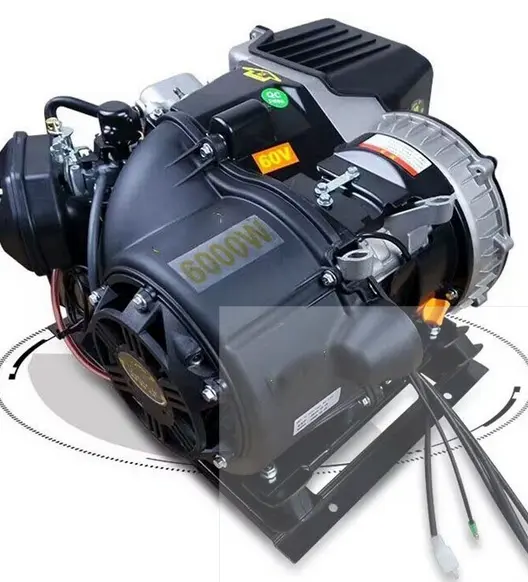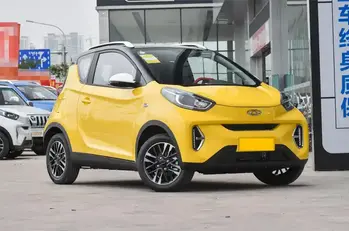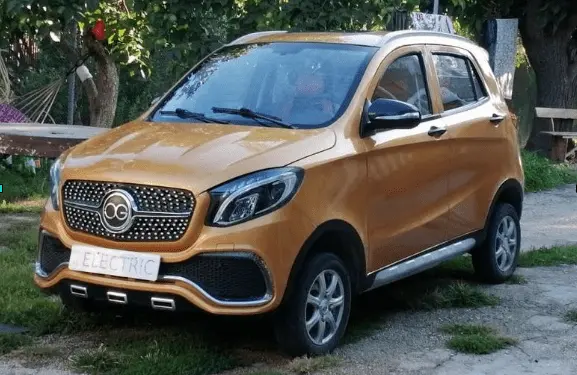
Unleashing the Potential of Electric Vehicles with Range Extenders
Electric vehicles (EVs) have made remarkable strides in recent years, with improved battery technology and charging infrastructure making them more accessible and practical for everyday use. However, one of the persistent challenges for EVs has been range anxiety, the fear of running out of battery power before reaching a charging station. To address this concern, some electric vehicles are now incorporating range-extenders, a technological innovation that promises to further boost the appeal of EVs.
What are Range Extenders?
Range extenders, also known as onboard generators or electric vehicle range-extenders (EVRx), are auxiliary power sources integrated into some electric vehicles. They operate independently of the vehicle’s primary electric propulsion system and can kick in when the battery’s state of charge (SoC) falls below a certain level.
How Do Range Extenders Work?
- Internal Combustion Engines (ICEs): Most range extenders are internal combustion engines, usually petrol or ethanol-powered, though there are examples of hydrogen fuel cells and even small gas turbines used in some experimental EVs. These engines generate electricity to recharge the vehicle’s battery, providing additional range.
- Generators: Range extender engines are coupled with generators, which convert the mechanical energy produced by the engine into electrical power. This electricity is used either to directly power the electric motor or to recharge the battery.
- Automated Operation: Range extenders are designed to operate automatically, activating when the battery’s SoC falls below a predetermined threshold. They seamlessly switch on to provide an extra driving range, allowing the driver to continue their journey.
Benefits of Range Extenders
- Increased Range: The primary advantage of range-extenders is their ability to significantly extend the driving range of electric vehicles. This is especially beneficial for those who frequently travel long distances or live in areas with limited charging infrastructure.
- Reduced Range Anxiety: By mitigating range anxiety, range extenders make EVs more appealing to a broader range of consumers. Drivers can enjoy the benefits of electric mobility without worrying about finding charging stations.
- Flexibility: Range extenders offer flexibility by providing an alternative to purely battery-dependent EVs. They can be particularly useful in regions with extreme temperatures or challenging terrain where battery efficiency may be affected.
- Lower TCO: For some drivers, the total cost of ownership (TCO) of a range-extended EV might be more favourable than a conventional gasoline vehicle due to lower operating costs and potential incentives for electric vehicles.
Examples of Range-Extended Electric Vehicles
ABOVE: Example of a range-extender supplied as standard on a Chinese Affordable EV.
Several mainstream automakers have embraced the concept of range extenders in their EV offerings, but these cars do not fit into our niche of Affordable EVs as all are above 25,000 USD:
- Chevrolet Volt: One of the early pioneers of range-extended EVs, the Volt featured a gasoline engine that acted as a generator when the battery depleted.
- BMW i3 REx: The BMW i3 REx is equipped with a small gasoline engine that functions as a range extender, giving the driver the option to use it when needed.
- Kia Niro EV: Kia’s Niro EV has a variant with a range extender, which uses a small internal combustion engine to recharge the battery when it’s low.
- Fisker Ocean: This upcoming electric SUV by Fisker is expected to offer a range extender option, providing an extended driving range for its customers.
- Many of the affordable electric vehicles from China offer range extenders as an option and some include them in all their models as standard.
While range-extenders have clear advantages, they also come with trade-offs, such as increased complexity and emissions when using fossil fuels. The choice between a pure electric vehicle and one with a range extender depends on individual driving needs and environmental considerations.
Range-extenders represent a bridge between traditional internal combustion engine vehicles and full electric vehicles, offering a solution to range anxiety and making electric mobility more accessible. As technology continues to evolve, we can expect to see even more innovative solutions for extending the range of electric vehicles, further accelerating the transition to a sustainable transportation future.







